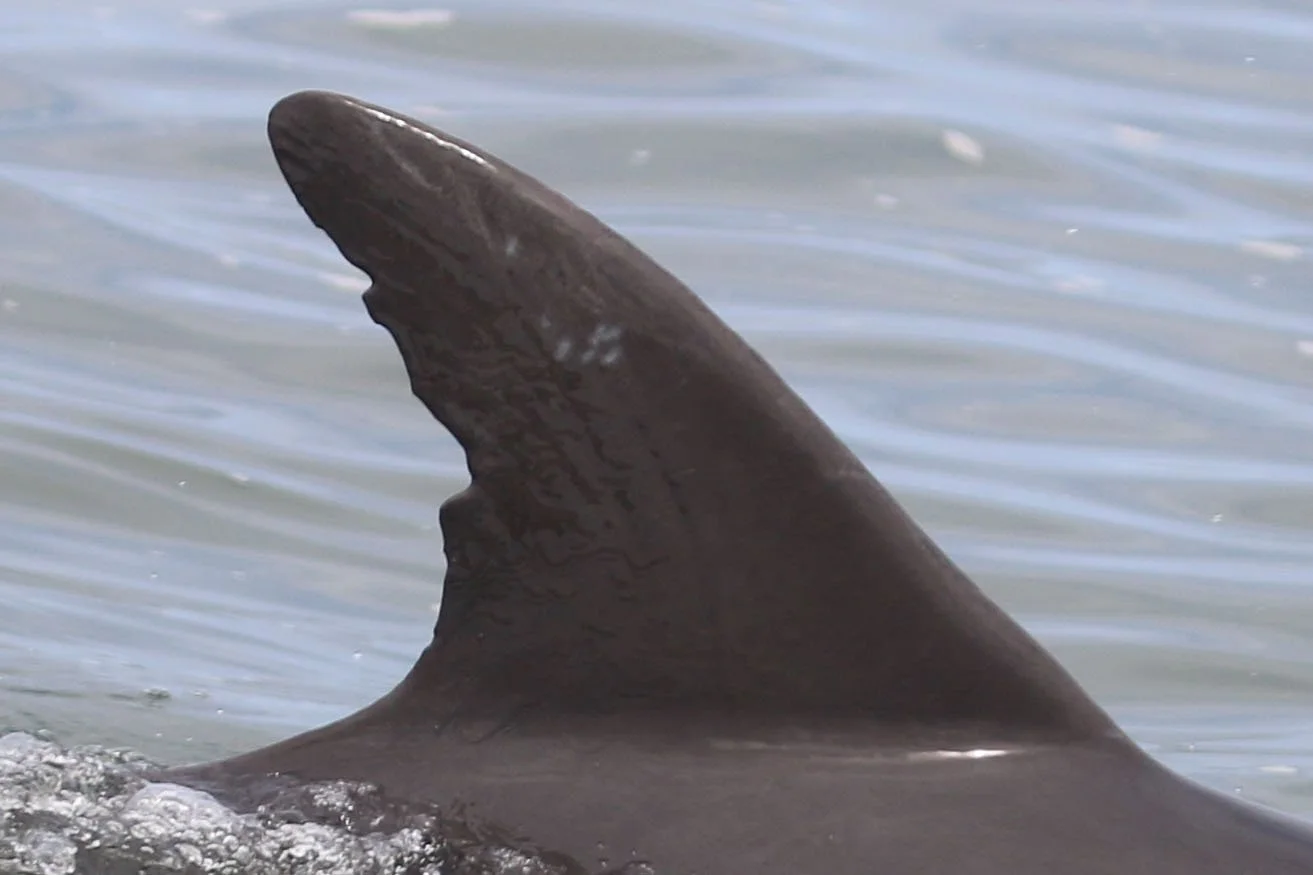Abundance and Distribution
The PCDP works on understanding if dolphins are adapting their habitat preferences due to sea-level rise, which in the Chesapeake Bay is twice the global average.
The PCDP has executed more than 800 surveys on these dolphins over the past 10 years, resulting in a catalog of >2000 dolphins that frequent the Potomac River and Chesapeake Bay.
This map shows every sighting of dolphins by PCDP from 2015-2025 in blue and sightings reported by members of the community in pink. If you click on the photo or this link, you can explore the sightings!
Population Structure
Our project uses photo ID to determine the winter migration patterns of the dolphins and understand how these dolphins fit into the larger structure of Atlantic bottlenose dolphin populations.
Photo ID allows us to track individual dolphins year to year by the shape of their dorsal fin. We can use this technique to determine movement, relationships, and behaviors.
Bill Clinton in 2025
Photo taken by Verena Conkin in 2025 under NOAA NMFS info should be: under NOAA NMFS General Authorization No. 19403 and 23782
Bill Clinton in 2023
Photo taken by Verena Conkin under NOAA NMFS info should be: under NOAA NMFS General Authorization No. 19403 and 23782
In the above images, Photo ID allowed us to track this dolphin over the course of a couple of years.
Social Behavior & Disease Risk
After the 2013-2015 Unusual Mortality Event our project focused on discovering how morbillivirus spreads among these dolphins and which dolphins are more at risk of contracting and spreading the disease.
Melissa Collier photographs as two pairs of dolphins surface and breathe synchronously, a behavior that facilitates both social bonding and disease transmission. Video courtesy of Milan Dolezal. Taken under NOAA NMFS Permit No. 23782
Our research has found that juvenile (4-10 years of age) and adult male dolphins have more synchronous breathing contact than adult females and calves.
This suggests that they are at higher risk for contracting and spreading morbillivirus.
These findings reflect the National Marine Fisheries Service stranding data (Collier et al., 2023).
Figure 3. Collier et al., 2023.
Top Left: The average number of synchronous breathing contacts for adult male, adult female and juvenile dolphins based on our data collection.
Bottom Left: A mixing matrix that shows the proportion of synchronized breaths that we observed between each demographic group. We found that dolphins tend to "sync" most with dolphins of their own age/sex class.
Right: A contact network that uses these findings to demonstrate how dolphins are connected based on their synchronized breathing patterns. Circles represent dolphins and lines between them represent a synchronized breathing interaction. We show an example of an individual's (large circles) synchrony network for each demographic group (isolated to the right of the network) to highlight the differences in contact among age and sex. We can use this network to simulate how disease can spread in PCDP dolphins.





